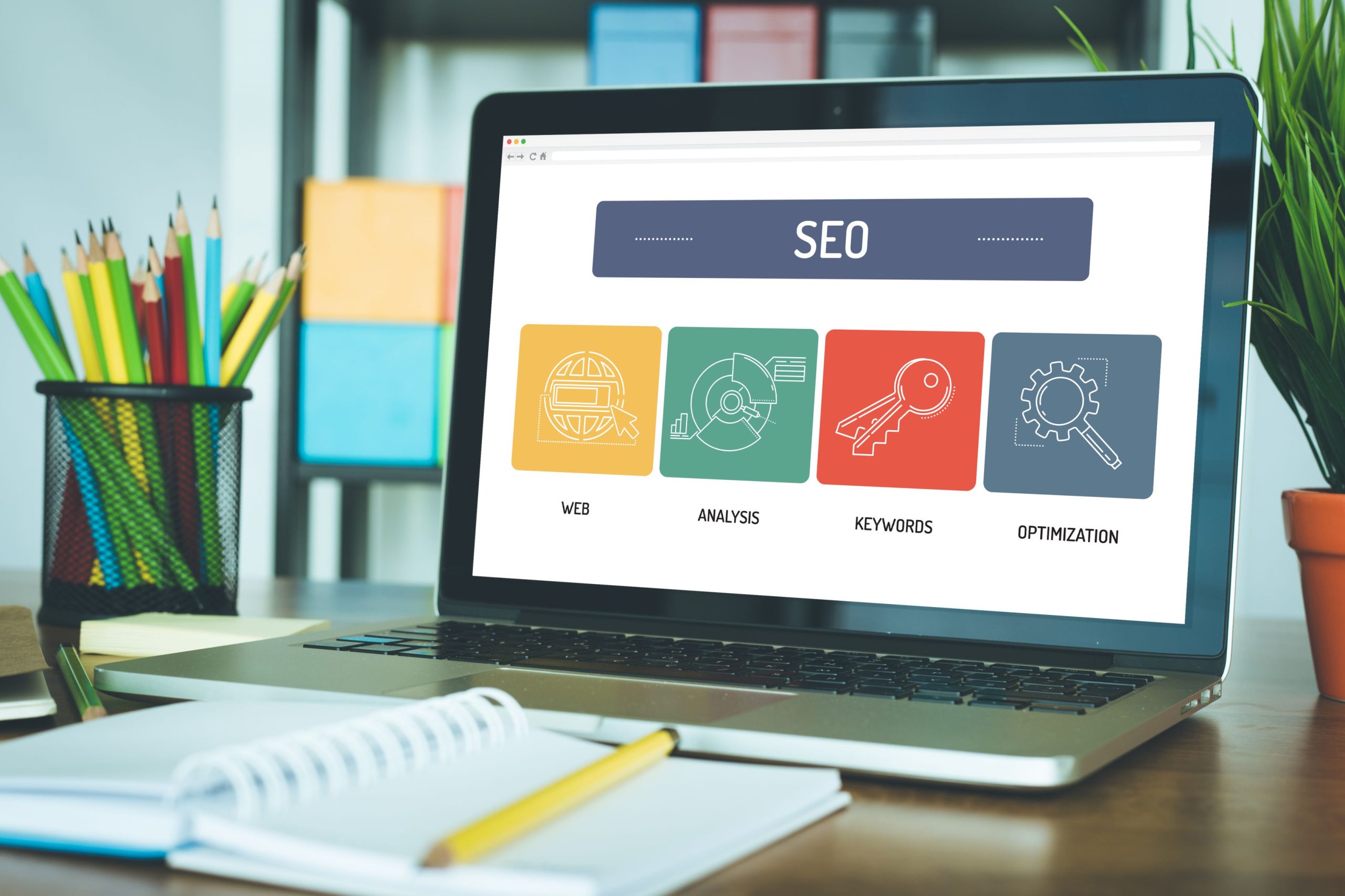

The Internet has changed global communication and marketing. It enables you to reach potential customers in almost every corner of the globe. How can you ensure they learn about your company? Let’s talk about SEO (Search Engine Optimisation) and localisation.
SEO localization strategy allows your website to achieve high rankings in search results. Each time you expand your reach beyond your country’s borders and create content in foreign languages, you must readjust your site’s content to be easily searchable in Poland, the United States, or India. You should also focus on geolocation, which means improving your site’s visibility in a specific city or region.
Contents
What is SEO, and why is SEO localisation important?
SEO is a whole strategy that optimises content, website structure, and acquiring backlinks. It improves a site’s visibility in search results. This translates to increased traffic and potentially greater conversion. The key word here is “visibility”; SEO helps your site stand out in the sea of online content.
What happens if you operate in more than one country and language? SEO varies depending on the language and region. Different markets have their specific search habits. User expectations and behaviours also change depending on the location.
Not every country uses the same search engines. In Europe and the United States, most people prefer Google; but in China, it is Baidu, and in Russia, Yandex. Each browser has its unique algorithms and ranking methods.
Local SEO
Local SEO is a form of SEO aimed at increasing a business’s visibility in local search results. It can be compared to choosing the best location to open a business, but in the digital world. When someone searches for the “best café in London” or “car mechanic in Warsaw”, you want your business to appear at the top. Local SEO helps small and medium-sized businesses attract customers from the surrounding area.
Google Business Profile listing
For local SEO to work effectively, you should take care of your listing on Google Business Profile. This is where you add all the relevant information about your business: contact details, location, opening hours, photos, and even customer reviews.
Do not forget to pick the category that best describes the scope of your activities for better visibility. This allows the search engines to display your business to people in the area. Is it too difficult to decide which category fits best? Check what your closest competitors have selected, or investigate what appears when you enter the relevant keywords in Google.
Add photos of your premises (building, interior, and products) or illustrations showing the results of the services you offer. While they do not directly affect local SEO, they encourage potential customers to visit your place. A professional appearance builds a reputation and distinguishes your business from others.
Your Google Business Profile should also include your website address. This way, customers learn more about your business and gain trust in your company. They can go to your website with just one click. In addition to the current address, add directions to make it easier for customers to reach your location. If you do not provide services on-site, add info about your service area in the description.
Prepare your business description. Make it concise; its maximum length is up to 750 characters. The most important information about your business should appear at the beginning (in the first 250 characters). The rest of the description will be hidden under the “more” button. Do not forget to fill it with key phrases and the name of the town or city you are operating in.



Local SEO: keywords
The Google Business Profile is not enough for SEO localization. Ensure that your website contains local keywords with the name of the city or district where your business operates. This way, when someone searches for services or products in your area, there is a greater chance that your site will appear in their local search engines’ results. Here are a few examples:
- coffee shop in central London
- car service Manchester Northern Quarter
- trendy clothing store Birmingham Bullring
- dentist in Edinburgh New Town
- IT services Bristol Harbourside
If your business operates in multiple locations, create dedicated subpages for each one. This way, you will optimise the content for each place separately using specific local keywords. It is an excellent way to further boost your position on Google.
Local link building and reviews
In local SEO, external links and mentions of your business in credible online locations, such as local business directories, mean a lot. They build your online presence and help to achieve a higher position in rankings. Do not underestimate the power of reviews, either. Google highly values customer opinions. Positive ratings build trust in your brand and improve your search engine results.
International SEO translation
SEO localization extends far beyond translating keywords into a target language. It considers local customs and preferences. This process involves adapting your content to become understandable, appropriate, and appealing to audiences in a specific region.
Why is this so important? Readers are likely to engage with well-localised content. They spend more time on your site, indicating to Google’s algorithms that there is valuable content present. As a result, your website continues to appear to other interested users.



How can you adapt content for local markets while maintaining search engine optimization?
Different markets vary from one another. Get to know them! Start with detailed keyword research to find popular terms in a specific region. SEO specialists and tools can assist you in this task. Ensure that your website is adapted to the local audience: use the appropriate language, units of measurement, and currency.
Understand your target market
Get to know your audience. Analyse demographic profiles, purchasing preferences, online behaviours, and trends among local users. Find out what is critical to them, their needs, and their expectations. Utilise tools like Ahrefs or Semrush to identify popular keywords in a particular region. Consider local dialects and phrases.
Adapt your website content
Adjust the meta description, titles and tags to local keywords. Ensure they are written in the local language and catch the attention of local audiences. Use the services of localisation specialists and native speakers to adapt content to the cultural context of the market. Avoid content that may be controversial in the specific region. Make sure that images, colours, and symbolism are appropriate.
Take care of technical aspects
Optimise your multilingual website for loading speed and accessibility on mobile devices. Users are often using phones to search for local businesses, so ensure your site looks good on smaller screens.
Be present on social media
Develop strategies for social media platforms: Instagram, Facebook, TikTok, WeChat (in China), or VKontakte (in Russia). This is a fast way to reach your audience. Collaborate with local bloggers, businesses, and media to acquire backlinks from credible sources (links to your website placed on other sites).
Think locally
Integrate your website with local mapping services and use geotargeting to better reach local customers. On your site, display graphics and photos featuring people from the region. Avoid stereotypes. Show how your products or services fit into the daily life of the local community.
Test and analyse
Regularly conduct A/B tests to see which elements of your website resonate best with the local audience. Encourage customers to leave reviews. They enhance your brand’s credibility. Consistently analyse results using analytical tools to understand which content works best in the specific market.
SEO and localisation tools
Are you wondering how to organise all of this? How can you ensure that your website is easily found by customers from different corners of the world? The answer is simple: you do not have to do it all by intuition. A whole range of tools is at your disposal to facilitate the SEO localisation process.



Keyword analysis
From the beginning, work with keyword analysis tools. Get access to Google Keyword Planner, Ahrefs, Semrush, and Surfer. They are excellent for finding popular keywords and assessing their competitiveness. If you are targeting the Asian market, consider using Baidu Keyword Planner.
Traffic monitoring
Once you have incorporated the right keywords into your website, you will need tools to monitor traffic. Start with Google Analytics. This software provides insight into where your users are coming from, what content interests them, and how long they stay on your site. If you are targeting the Russian market, consider using Yandex Metrica.
Website optimisation
Tools like Semrush or Moz Pro will assist you in website optimisation. They offer comprehensive solutions, including keyword analysis and SEO audits of your site. They help in optimising keywords and also in identifying and resolving technical difficulties on your site that may affect its position on search engine results pages.
Managing multiple languages on your site
Simple machine translation with free programs like Google Translate is not the best solution. Its poor quality discourages users from engaging with your site and leads to lower search engine rankings.
However, if you need to translate large amounts of product descriptions or categories for an online store into a foreign language, you can use professional machine translation based on neural networks. These can then be re-edited and adapted to the target market by professional translators. Localisation experts will ensure that the translations sound natural and are culturally appropriate.
Use tools that facilitate managing your site’s versions in different languages, e.g. WordPress with the WPML plugin. It simplifies the process of publishing and updating content in multiple languages.
SEO translations and website localisation
Are you thinking about expanding your business into new markets? Proper website localisation for local SEO is essential for getting organic traffic from the search engine.
Our services, SEO translations and localisation, allow your brand to establish a real dialogue with customers, regardless of where they currently are in the world. We never overlook visibility in local search engines. We will help you effectively reach your customers. Contact us to find out how we can help you to enter a new market.















